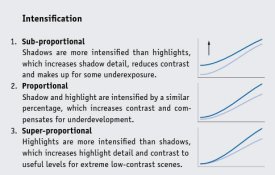Pre-flashing is a good technique and I recommend also.I would recommend trying pre-flashing your paper before printing ...
Pre-flashing your paper means giving it a very short exposure overall (without a negative in your enlarger!) without visibly fogging the paper... You should be able to find plenty of info on the exact method here on APUG. Having a second enlarger, as I luckily do, is a great help for this, but it can be done with one.
But sometimes I pre-flash with the negative in place. I take a gallon plastic milk jug, the ones roughly square on each side, and cut an opening for the lens on one side where the lens can fit. Then I pre-flash through the jug. Brighter areas get less pre-flash then the highlights. Which further tends to help improve the contrast.
TR




